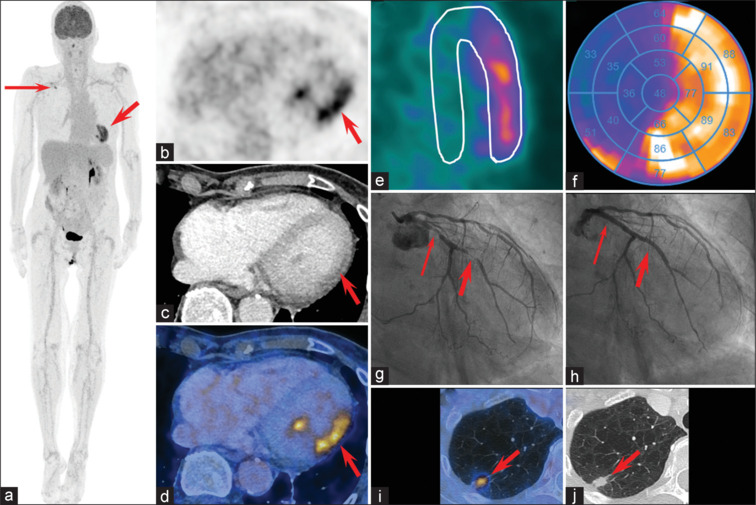Incidental Detection of NSTEMI on Whole-body [18F] FDG PET/CT.
IF 0.5
Q4 RADIOLOGY, NUCLEAR MEDICINE & MEDICAL IMAGING
Indian Journal of Nuclear Medicine
Pub Date : 2025-03-01
Epub Date: 2025-06-27
DOI:10.4103/ijnm.ijnm_163_24
引用次数: 0
Abstract
Besides tumor imaging, 18fluorine-fluorodeoxyglucose (FDG) is equally useful for the detection of inflammatory diseases such as polymyalgia rheumatica and large vessel vasculitis. Critical incidental findings might be observed with FDG positron emission tomography/computed tomography (PET/CT) needing urgent medical attention and intervention. We present a case of an 81-year-old patient with a history of polymyalgia rheumatica. Cardiac activity representing an evolving non-ST segment elevation myocardial infarction was detected incidentally by FDG PET/CT.

全身NSTEMI的偶然检测[18F] FDG PET/CT。
除肿瘤成像外,18氟-氟脱氧葡萄糖(FDG)对风湿病多肌痛和大血管炎等炎症性疾病的检测同样有用。FDG正电子发射断层扫描/计算机断层扫描(PET/CT)可能会观察到严重的偶然发现,需要紧急医疗护理和干预。我们提出一个病例81岁的病人多肌痛风湿病的历史。通过FDG PET/CT顺便检测到心脏活动,代表正在发展的非st段抬高心肌梗死。
本文章由计算机程序翻译,如有差异,请以英文原文为准。
求助全文
约1分钟内获得全文
求助全文
来源期刊

Indian Journal of Nuclear Medicine
RADIOLOGY, NUCLEAR MEDICINE & MEDICAL IMAGING-
CiteScore
0.70
自引率
0.00%
发文量
46
 求助内容:
求助内容: 应助结果提醒方式:
应助结果提醒方式:


